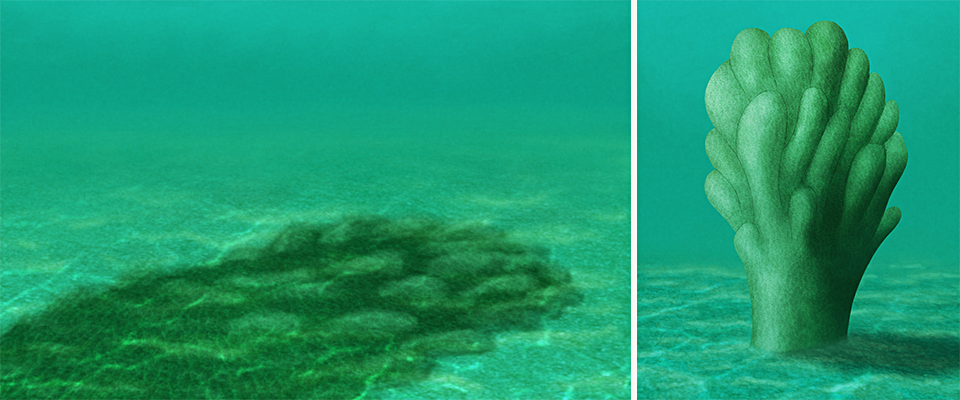During the summer of 2011 amateur paleontologist Ron Fine discovered an unusual fossil in northern Kentucky, USA. Beginning with an oddly-textured nodule, he gradually excavated a structure about 1m wide and 2m long (3′3″ by 6′6″) – far larger than any other fossil found in the area, and unlike anything seen before.
Dating to the Late Ordovician (~450 mya), and nicknamed “Godzillus” due to its massive size, the strange fossil has a roughly elliptical shape with what appear to be multiple branching lobes, and a surface texture made up of many rows of tiny bumpy “scales”. In some places small trilobites are found directly attached to it, most likely either feeding on it or sheltering.

Although a paper has been published on Godzillus, it’s been given no official scientific name or classification. At best it’s been called an “organically textured surface”, with two different main possibilities suggested for its identity – either an algal mat that was deformed by water currents and smothered by a turbidity flow, or some sort of unknown upright soft-bodied organism that was toppled over and similarly buried.
Both hypotheses have their own strengths and weaknesses, and each explain some features of the structure but not others. So, for now, Godzillus remains a bizarre and unique fossil.

